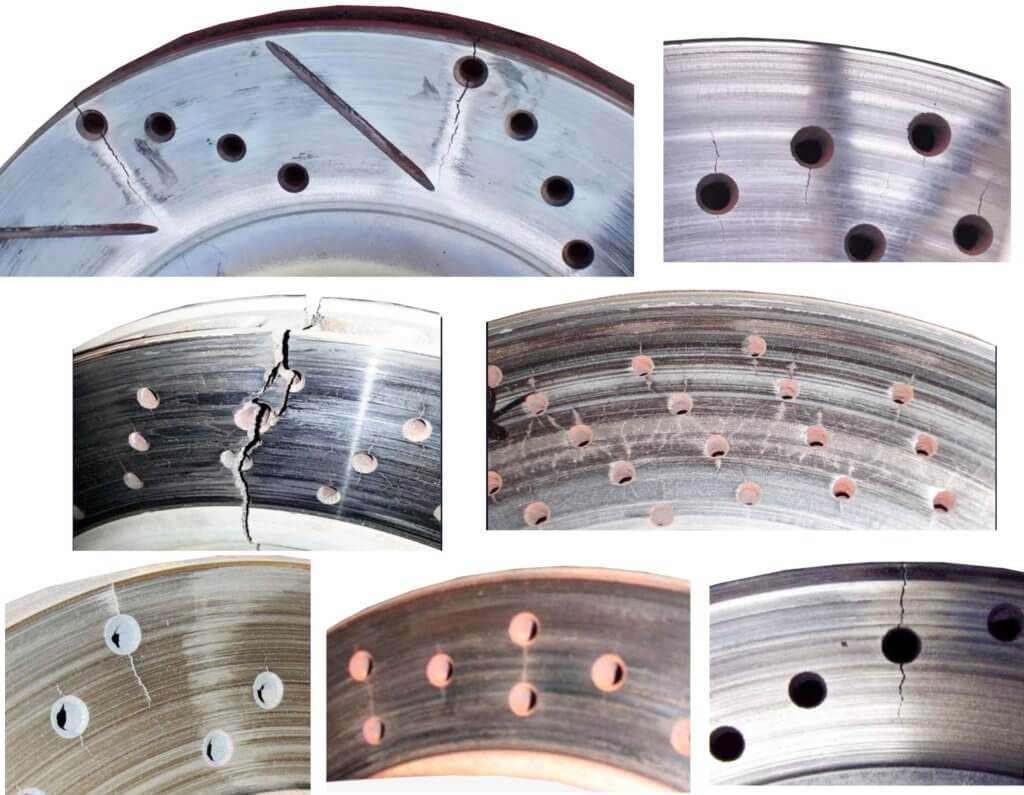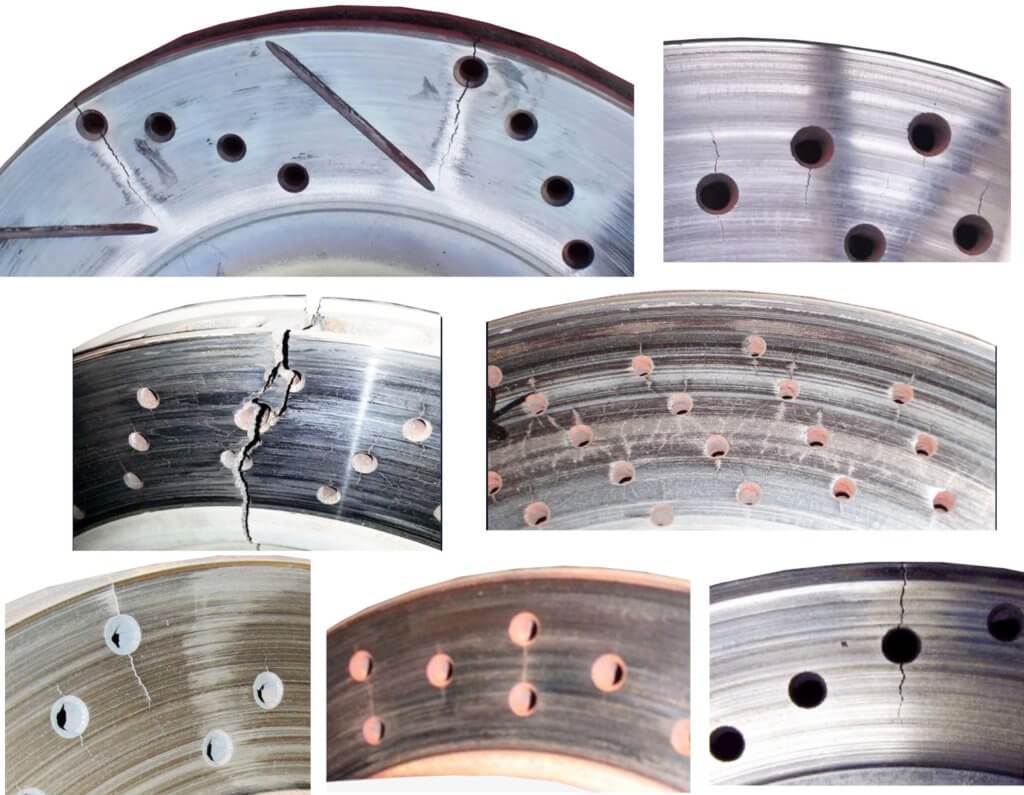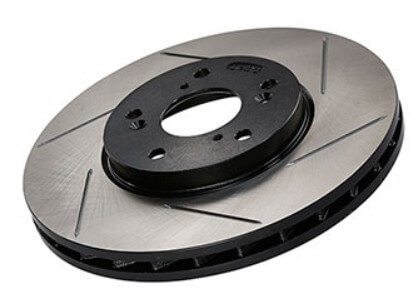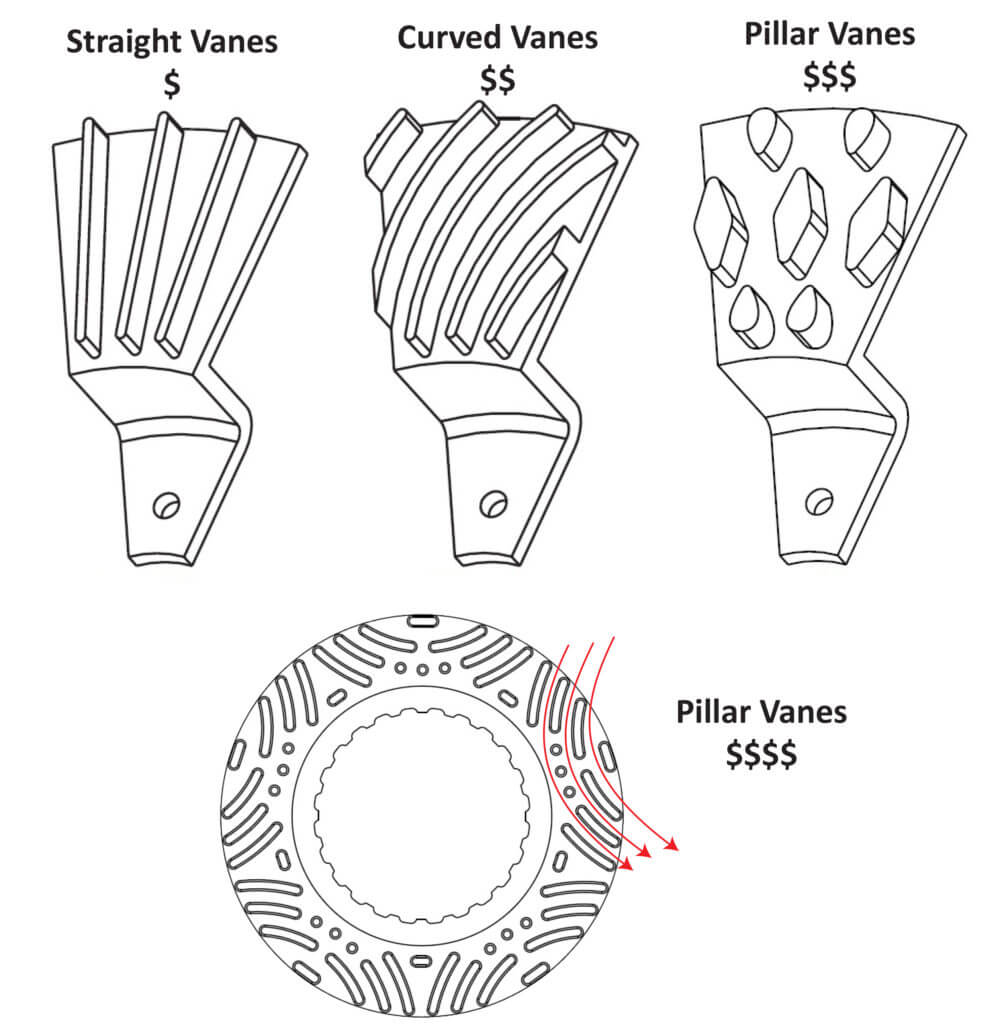Should you install drilled and slotted rotors?
Why you shouldn’t install drilled and slotted rotors
Do drilled rotors provide better braking for street use?
Not when used for normal street use
The theory behind drilled rotors is that the holes provide more surface area which is supposed to promote better cooling and better braking.
However, rotor MASS is what provides heat transfer and better braking. When a rotor is drilled, you’re actually removing mass, and therefore you REDUCE the rotor’s ability to remove heat during braking. And “during braking” is the key term here. In terms of braking ability, drilled rotors don’t provide any stopping benefit whatsoever. They simply provide better rotor cool-down after the stop. Even then, there are issues with drilled rotors.
Drilled rotors provide uneven cooling. That’s why they crack
The extra cooling provided by the holes creates results in cracking around the holes. This isn’t rocket science. When you create small cooling holes all around a very hot rotor made out of cast iron you get uneven cooling that cracks the iron.


How about slotted rotors, do they increase stopping power
Slotted rotors don’t provide any benefit for street us.  Here’s why: Slotted rotors are designed to reduce fade from off-gassing in heavy braking at high speeds for race cars.
Here’s why: Slotted rotors are designed to reduce fade from off-gassing in heavy braking at high speeds for race cars.
The slots vent gas that accumulate between the older asbestos brake pads and the rotor. That layer of gas caused brake fade because the pad was no longer in contact with the rotor. Much like tire hydroplaning, brake fade was caused by the pad riding on a “gas bearing” that dramatically reduced braking and caused pad glazing.
In addition to venting the off-gassing, the sharp edge on the slots also remove glazing by refreshing the face of the pad. In other words, just like a kitchen mandolin that turns a potato into potato chips, slots cut off a thin later of pad material. So you always have fresh brake material touching the rotor, at the expense of reducing pad life.
How big of a problem is off-gassing?
It isn’t a problem for street us. It used to be a big problem with early non-organic asbestos (NAO) brake pads that were glued (instead of riveted) to the backing plate. The resins and adhesives in those pads produced gas byproducts when heated to high temperatures in heavy braking. But NAO pads aren’t used much anymore, and the adhesives have improved a great deal since the introduction of ceramic pads.
Braking heat
So here’s the big question is: does stopping with ordinary brake pads and rotors generate enough heat to cause fade? Keep in mind that brake heat dissipates two ways; the majority of the heat is removed due to the pumping/cooling action of the rotor vanes, and the rest through the brake pad and backing plate dissipating heat back to the caliper and brake fluid. When brakes heat up to near the fade point, enough heat has already entered the brake fluid, causing it to boil.
If you want better braking, get better cooling
Rotor vane design is the single most important feature to look for in a brake rotor because the pumping action is far more effective than the slots and holes. Remember, the vanes are a centrifugal fan that sucks air into the rotor near the hub and throw it out the vanes on the rotor’s circumference.
Carmakers spend a lot of money and engineering time designing these “fans” and that’s what makes OEM rotors more expensive. Factory rotors generally have more mass than economy aftermarket rotors as well. More mass, bigger fans, more vanes all add up to better cooling.
Cheap aftermarket rotors don’t duplicate the factory cooling vanes. Instead, they use straight vanes because they cost less to produce. But you won’t get the same cooling.

Brake rotor cooling vane designs from cheapest to most expensive
©, 2016 Rick Muscoplat
Posted on by Rick Muscoplat